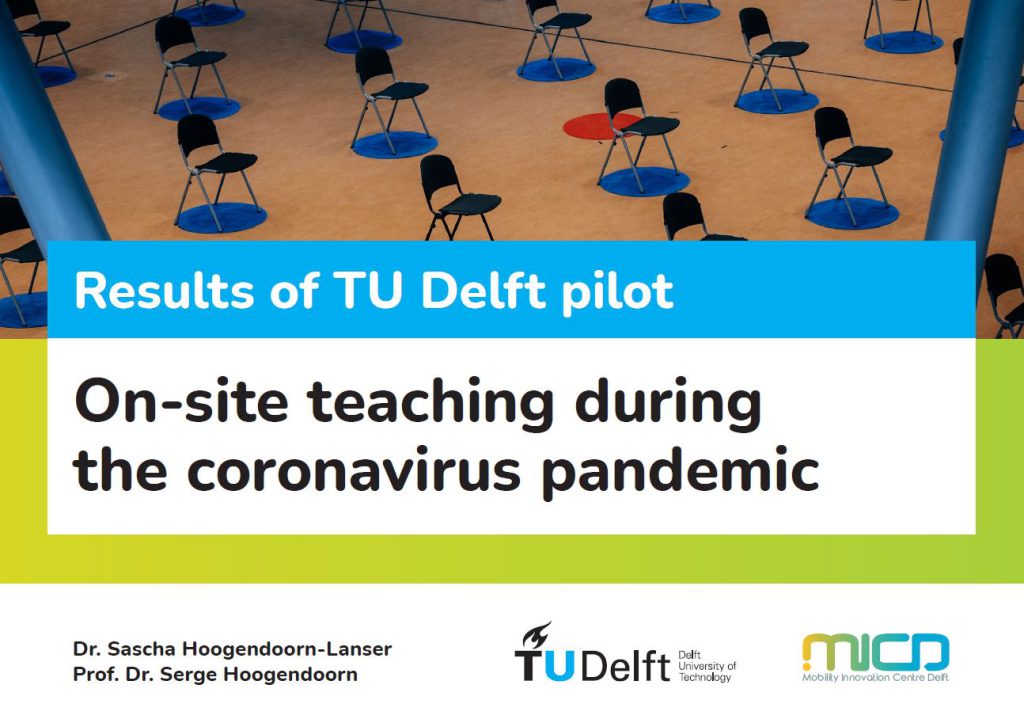In early 2021, the Ministry of Education, Culture and Science (OCW) asked eight consortia of secondary and higher education to set up pilots for the safest possible reopening of education. The goal: to understand what measures are necessary. The planning: get ready before the start of the academic year 2021/2022. OCW asked TU Delft’s MICD to organize one of these eight pilots.
Duration
2021Partners (TU Delft)
Urban Mobility Observatory (UMO), Active Mode Lab (AM lab), AI-labPartners (other)
ROC Mondriaan, The Hague University, EY, Forkbeard, Proxemy
In most of the pilots that OCW had set up, (self-)testing strategies were central. Testing also had an important place in our pilot: this helps to keep the virus out of the educational institution. But we also used technology to minimize the risks inside the premises. Good monitoring of high-risk interactions and crowds was central to this.
To measure is to know
To be able to monitor properly, we set up a measuring system with beacons, wristbands and an app. If students and teachers wear the wristbands or use the app, we can easily determine where in a building people are too close to each other. To keep an overview, we use a user-friendly dashboard, the EY Proximity Monitor.
With this basic technology we can keep track on where and when problems occur. We can also look back with historical data and thus form a picture of the use of a building: : how busy is it during the day and where is it busy?
Because it is often impractical to hang beacons everywhere, we used artificial intelligence to fill in (estimate) ‘white spots’ in the monitoring. Using a limited set of measurement points, we can create an accurate crowd map of an entire building. With the help of artificial intelligence, we have also succeeded in predicting ‘traffic’: where could it become too busy in 15 minutes, an hour or longer?
Interventions
We tested various interventions to solve the bottlenecks or—better yet—prevent them. Bottlenecks that occur because the space (the corridor, the room, the doorway etc.) cannot accommodate the number of people, require solutions such as adapting walking routes and spreading out the time of, for example, the break. If there is enough space, but people still clump together, then communication and behavioral influencing are the obvious solutions. For the latter we have used, among other things, Proxemy Bubbles: small portable devices that give off a light and vibration signal when a person comes too close to another.
With our combination of testing at the gate and monitoring and adjusting behind the gate, it turned out to be quite possible to teach students safely on location.
More applications
Of course, the learning experiences are not only useful for the 2021/2022 academic year. Many specialists agree that we will not be rid of corona for the foreseeable future. And even if corona has disappeared from the scene, another pandemic can easily emerge. All the knowledge and skills we have acquired are therefore also useful for the future: how can we become more resilient?
Applications beyond crisis situations are also conceivable. The new methods for monitoring, modeling and forecasting make it possible to measure the ‘heartbeat’ of a building. How can we use knowledge of this heartbeat to optimally design, clean, stock and maintain a building? Our monitoring system provides a good basis for answering those questions as well.
Report
For the summary of the research results you can read the booklet

